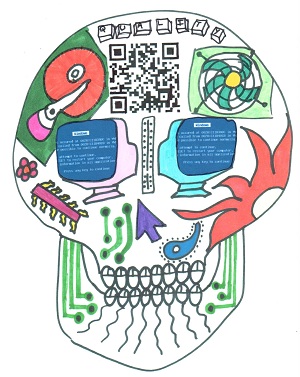
Though many give credence to the sentiment that quality is dead, testers linger like ghosts with unfinished business who cannot move on from this plane. There is never as much time for testing as we would like and some of our bug reports are regarded with as much skepticism as messages from beyond the grave. We tend to haunt the developers with questions and carefully couched criticisms, and I daresay that some programmers might like to call for an exorcism.
We may think of ourselves as shuffling zombies toward the end of a long release cycle, when testing time is often sacrified for feature implementation and we can end up working long hours, though thrown under the bus may not be the worst way to go. Those carefully scrutinizing our exceptional strength to endure the inevitable crunch time, our keen powers of observation in uncovering bugs, and our cold appraisal of the software will realize our true nature and may start stocking up on stakes and garlic, peering into our cubes looking for the coffins where we sleep as we must surely be vampires instead. So far, I have no reports of testers biting co-workers, however tempting at times. After all, wouldn’t we want to pass on our dark gifts to our team mates, test-infecting them to become more like us?
Testing wants Braaaains
At STARWest 2011, James Whittaker and Jeff Payne heralded a dark future for testers without automation scripting skills. While I welcome the increasing testing prowess of software developers, their testing focus is on automation, whether at the unit level or something more closely approximating an end user’s interaction. I have started thinking of my automation test suite as my zombie horde: persistent but plodding on unthinking, repeatedly running into obstacles, requiring tending. It really want some brains to interpret the results, maintain its eccentricities, and perhaps play some games in the backyard shed. As Michael Bolton stated at CAST 2011, lots of automated checks versus doing human-observed testing is one of the hard problems of testing. “A computer executing automated tests only makes one kind of observation, it lacks human judgement.”
Even these fast zombies are not a replacement for the thinking mind of a tester, though how to think about testing is a question of much debate. Testers from different schools seem to regard one another with a bit of hostility. Each successive school of thought seems to bury the preceding one with great ceremony, including the departed’s whole entourage for the journey to the afterlife. Those thus interred seem like mummies, desiring a terrible vengeance on the ones disturbing their eternal rest or even grave-robbing their ideas. At CAST 2011, Michael Bolton encouraged us to take a more measured tone with people who disagree with us, referencing Cem Kaner’s sentiment that “reasonable people can disagree reasonably.”
Memento Mori
With the Day of the Dead celebration occurring this week, it seems fitting to ponder our own demise as testers. Those celebrating this holiday want to encourage visits by the dead, so the living can talk to them, remembering funny events and anecdotes about the departed, perhaps even dressing up as them. Some create short poems, called calaveras (“skulls”), as mocking epitaphs of friends, describing interesting habits and attitudes or funny anecdotes.
So here is a calavera for me:
We miss her because she could test like a boss.
When a defect appeared before her eyes,
Her lilting voice would intone “Hey guys…?”
At best, she was a code monkey,
but her sense of humor was always funky.
Though she claimed her heart was in her test,
we always know she loved us best.
I encourage you, the living, to visit me with events, anecdotes, or funny poems. Whatever undead creature your tester persona most identifies with, keep on pursuing excellence and have a happy Halloween!








